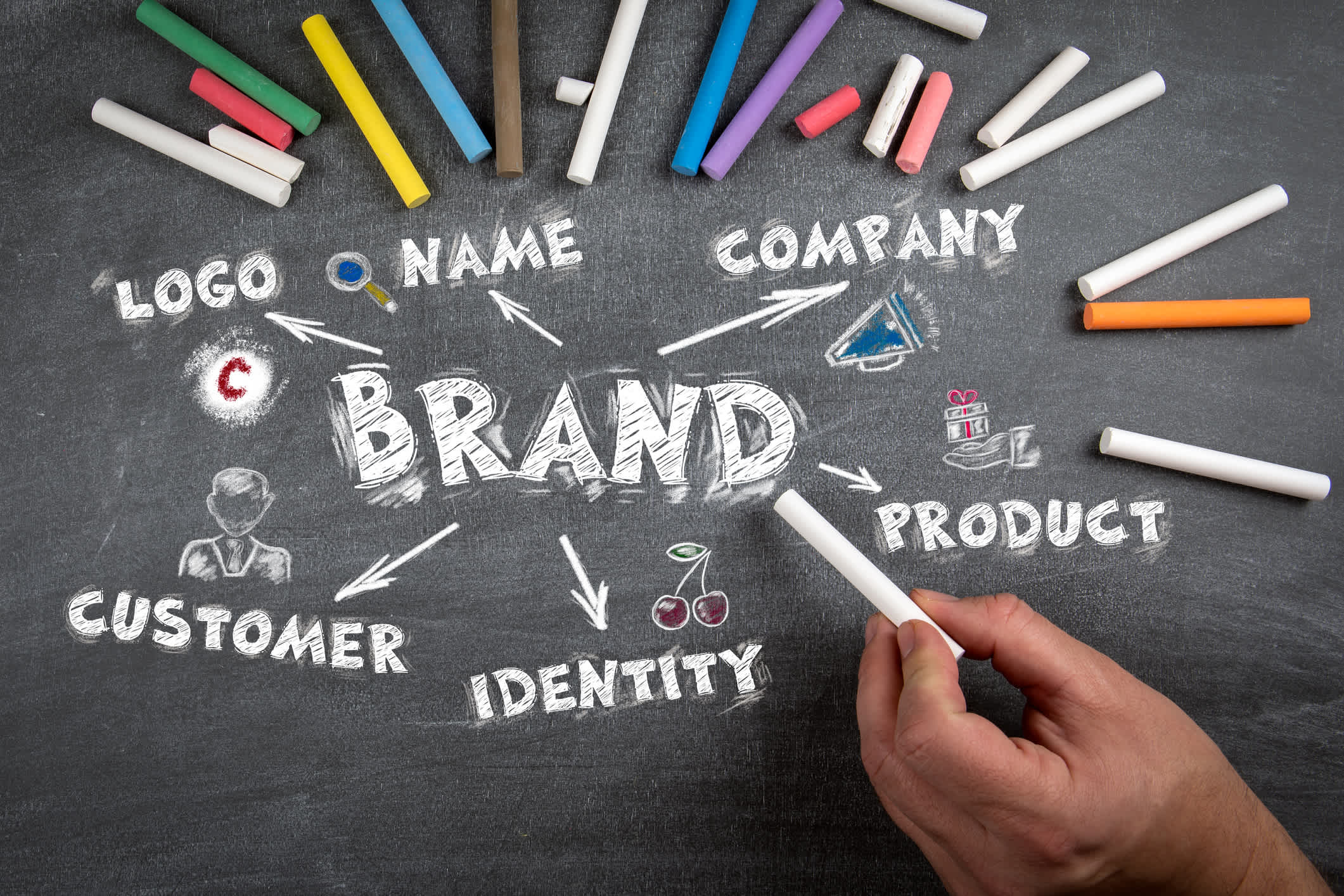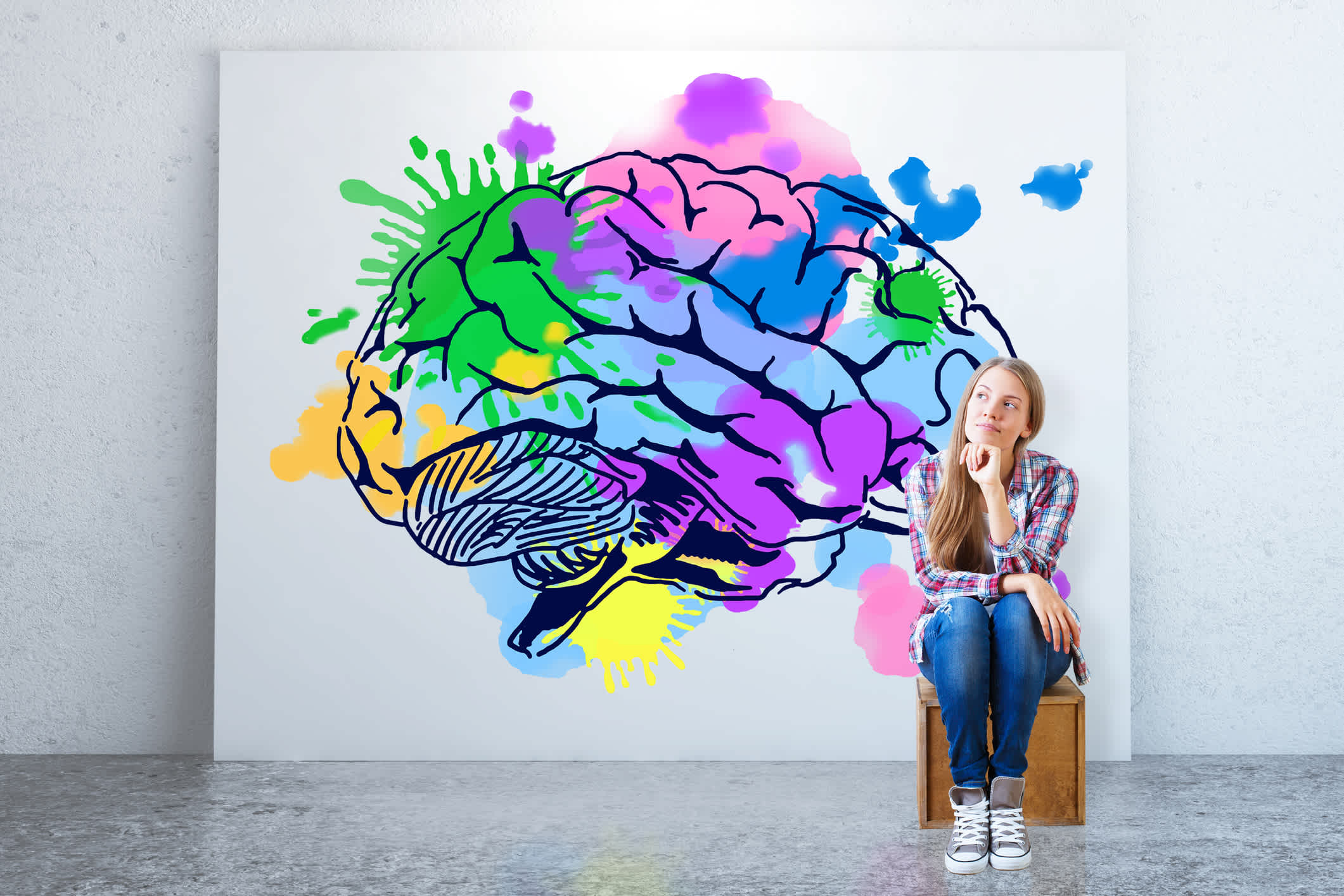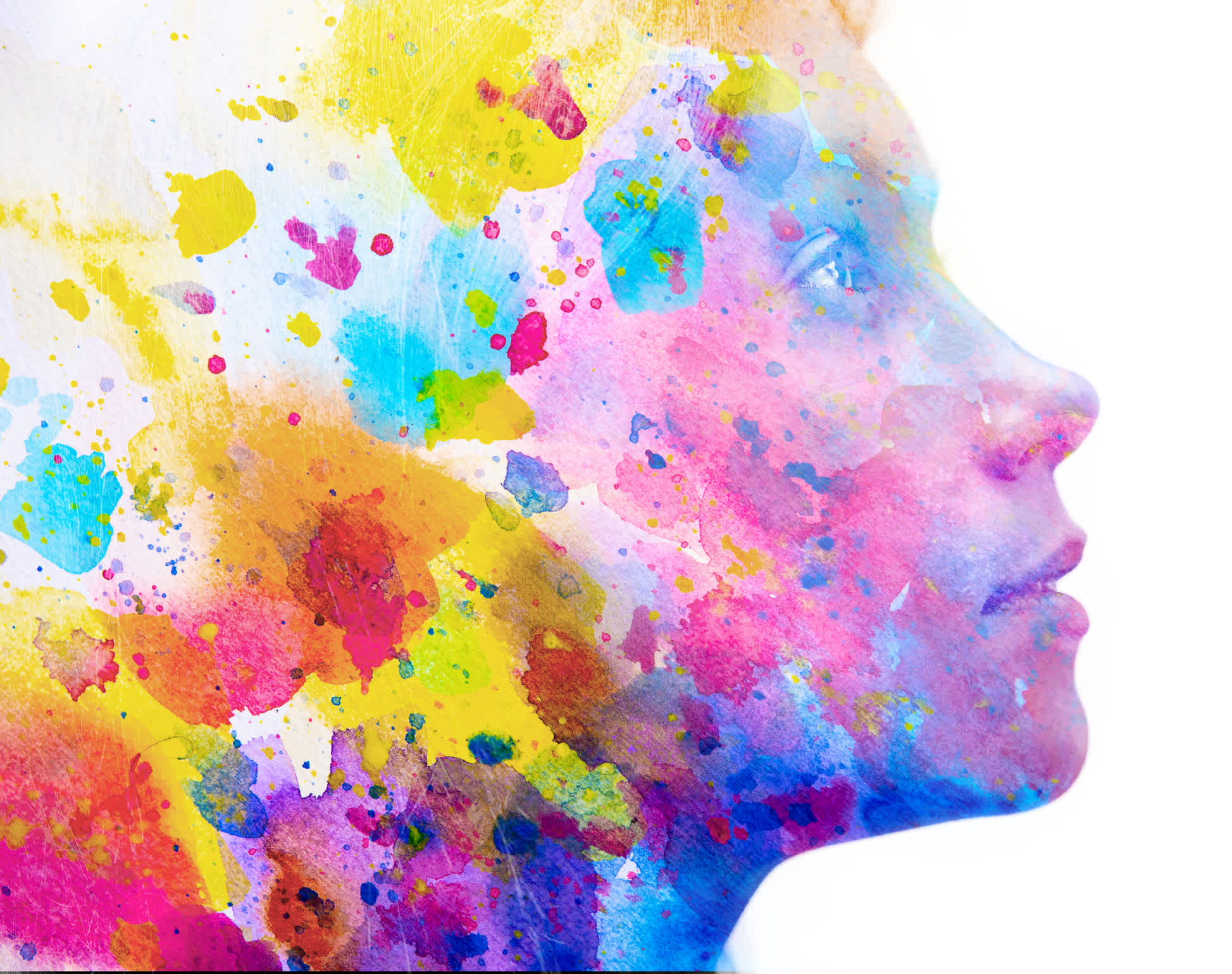//
Feb 5, 2024
Mastering Corporate Identity: The Art of Strategic Color in Corporate Branding
When first impressions matter and brand recall is crucial, mastering the art of corporate identity becomes a strategic imperative.
A key component of this mastery lies in understanding the nuanced impact of colors in corporate branding. In this blog post, we'll explore the psychology behind colors, how they influence consumer behavior, and most importantly, how you can leverage them to strengthen your brand identity.
If you've ever wondered how the right hues can transform your brand from forgettable to iconic, you're in the right place.
The Psychology of Colors: Evoking Emotions and Shaping Perceptions

Colors have an undeniable influence on and behaviors, and this holds profound implications for the world of corporate identity and branding. Understanding the psychology behind colors is akin to wielding a painter's brush with the ability to craft an emotional landscape your audience loves.
Here are some things you should consider:
The Emotional Spectrum:
Each color possesses a unique set of emotional connotations. Red, for instance, is often associated with passion, energy, and urgency. It grabs attention and stimulates a sense of excitement, making it a popular choice for brands aiming to evoke strong emotions.
In contrast, blue tends to convey trust, stability, and professionalism, making it a frequent choice for corporate brands seeking to establish credibility.
Consider the psychological impact of the colors you choose for your brand. Do you want your audience to feel a surge of energy and enthusiasm, or are you aiming for a more serene and trustworthy ambiance? Aligning your color choices with the emotional response you wish to evoke lays the foundation for a brand identity that connects on a deeper level.
Influence on Consumer Behavior:
Beyond eliciting emotions, colors play a pivotal role in shaping consumer behavior. Studies have shown that up to about products can be based on color alone. This underscores the importance of selecting colors that not only align with your brand's personality but also resonate with your target audience.
For example, the use of green in branding often signifies health, nature, and eco-friendliness. This makes it an ideal choice for brands in the wellness or environmental sectors, as it subconsciously communicates values that appeal to health-conscious or environmentally aware consumers.
Understanding the nuances of color psychology empowers you to guide your audience towards desired actions.
Cultural and Contextual Variations:
It's crucial to recognize that the emotional impact of colors can vary across cultures and contexts. While red might symbolize luck and celebration in some cultures, it may be associated with danger in others. Moreover, individual experiences and preferences also contribute to the way colors are perceived.
When crafting your brand's color palette, consider the cultural backgrounds of your target audience. Conduct thorough research to ensure that the emotions you intend to evoke align positively with the cultural context. This sensitivity not only prevents misinterpretation but also demonstrates a thoughtful approach to your brand's global presence.
Creating Brand Personality:
Colors contribute significantly to the overall personality of your brand. Whether you aim to be perceived as innovative, trustworthy, or approachable, your color choices can reinforce and amplify these traits. Think of your brand as a character in a story, and the colors as the wardrobe that speaks volumes about its personality.
For instance, vibrant and bold colors may align with a brand that seeks to portray itself as cutting-edge and modern. On the other hand, muted and sophisticated tones might be more suitable for a brand projecting a timeless and classic image. Consistency in the use of these colors across all brand touchpoints further solidifies the personality you want to convey, creating a cohesive and memorable brand identity.
Building a Strong Corporate Identity

The strategic selection of colors goes beyond mere aesthetics; it is the silent communicator of your values, ethos, and the very essence of your business. Let's look deeper into the art of building a robust corporate identity through the choice of colors.
Choosing the Right Colors:
In corporate branding, the significance of choosing the right colors cannot be overstated. Your brand colors are the visual embodiment of your company's personality, and they play a crucial role in shaping how your audience perceives you. A thoughtful color palette creates a seamless connection between your brand and your target audience.
The process begins with a deep dive into your brand's values and mission. What emotions do you want your brand to evoke? Are you aiming for a sense of trust, innovation, or reliability? Once you've identified the core emotions you want to convey, you can align them with specific colors that resonate with your audience on a subconscious level.
Color Wheel and Branding:
Imagine the color wheel as your compass in the vast sea of hues. Understanding the relationships between colors allows you to navigate this terrain with finesse. Analogous color schemes, where colors sit side by side on the wheel, offer a sense of harmony and cohesion. This can be ideal for brands that want to convey a unified and approachable image.
On the flip side, complementary colors, found opposite each other on the wheel, create a dynamic and attention-grabbing effect. This choice can work wonders for brands seeking to stand out and make a bold statement. The color wheel serves as a guide, helping you strike the perfect balance between consistency and creativity in your branding efforts.
Implementing Color in Corporate Branding
Now that we've discussed the importance of strategic color choices, let's delve deeper into the practical aspects of implementing these colors throughout your corporate .
Logo Design:
Your logo is the visual cornerstone of your brand, a symbol that encapsulates your identity and values. When considering the role of colors in logo design, think beyond aesthetics. Each color should evoke specific emotions and convey messages that align with your brand narrative.
Start by examining the psychological associations of individual colors. For instance, blue often symbolizes trust, professionalism, and reliability, making it a popular choice for finance and technology brands. On the other hand, vibrant and energetic colors like red or orange can be ideal for brands seeking to portray dynamism and innovation.
Once you've chosen your colors, ensure that they seamlessly integrate into your logo design. The color combinations should be visually appealing and maintain clarity, even in different sizes or across various platforms. Remember, a well-designed logo with strategically chosen colors can leave a lasting imprint on your audience's memory.
Marketing Collaterals:

, and this extends to your marketing collateral. Whether you're crafting a presentation, designing brochures, or creating online content, the chosen color palette should remain consistent across all mediums.
Develop comprehensive brand guidelines that clearly outline the proper use of colors in different materials. Specify color codes, provide examples, and offer guidance on when to use primary colors versus secondary colors. This not only ensures a unified visual identity but also minimizes the risk of color discrepancies that can dilute your brand message.
Consider the adaptation of your color scheme to different marketing channels. Colors may appear differently on digital platforms compared to print materials, so it's crucial to test and adjust as needed. Consistent use of colors across all collateral not only reinforces brand recognition but also fosters a sense of professionalism and reliability in the eyes of your audience.
Website Design:
In the digital age, your website is often the first touchpoint between your brand and potential customers. The color scheme on your website plays a pivotal role in creating a cohesive and engaging user experience.
Harmonize the colors from your logo and marketing collateral with the overall . The background, buttons, text, and other elements should all align with your established color palette. This not only enhances the visual appeal but also creates a seamless transition for visitors moving from your offline materials to your online presence.
Consider the user journey and how colors guide individuals through your website. Use contrasting colors for call-to-action buttons to draw attention, and maintain legibility by ensuring a suitable contrast between text and background colors. A visually pleasing website, aligned with your brand colors, enhances the overall user experience and reinforces your corporate identity.
Social Media Presence:
Social media platforms are dynamic spaces where visual content reigns supreme. Maintaining a consistent color scheme across your social media profiles helps in creating a recognizable and cohesive brand image.
Whether you're creating graphics, posting images, or , infuse your brand colors into the content. This not only fosters brand recall but also contributes to a visually cohesive feed that reflects professionalism and attention to detail.
Experiment with how your brand colors interact with different social media features. For example, adapt your color scheme to fit Instagram's visual aesthetics or ensure that your logo remains clear and vibrant as a profile picture on platforms like LinkedIn. Consistency across social media platforms builds a robust online presence that reinforces your corporate identity.
Overcoming Challenges: Navigating the Maze of Brand Consistency

Implementing a consistent color scheme across diverse marketing channels is akin to navigating a maze – challenging, but incredibly rewarding when done right. Let's dive deeper into the common challenges businesses face and explore a few effective strategies to overcome them.
1. Consistency Across Channels:
Maintaining color consistency across various platforms, both online and offline, is a common challenge. Your brand's colors should look the same whether they appear on a digital screen, a printed brochure, or a billboard. To address this, establish comprehensive brand guidelines that clearly define color codes (e.g., HEX, RGB, or Pantone) for every shade in your palette. This ensures that your marketing and design teams have a reliable reference point, fostering uniformity across all channels.
2. Team Alignment:
Achieving consistency requires everyone on your team to be on the same page. Conduct regular training sessions to educate your marketing, design, and content creation teams about the importance of maintaining brand colors. Provide them with practical examples and guidelines, empowering them to implement colors consistently across different materials. Open communication channels where team members can seek clarification on color choices, fostering a shared understanding of your brand's visual identity.
3. Adapting to Different Media:
Colors can appear differently depending on the medium – what looks vibrant on a computer screen may appear muted in print. Overcome this challenge by testing your color palette across various platforms and materials. Consider creating color variations specifically optimized for different media types. For example, RGB colors are ideal for digital screens, while CMYK is better suited for print. Regularly review and update your brand guidelines to include recommendations for different media, ensuring your colors remain true to your vision .
4. Scaling Challenges:
As your business grows, so does the need for scalability. Challenges arise when expanding your brand into new markets or creating additional products and services. To address this, design your color palette with scalability in mind. Choose a versatile set of colors that can adapt to different contexts without losing their essence. When expanding into new markets, consider cultural connotations associated with colors to avoid unintentional misinterpretations.
A Journey Beyond Aesthetics
The art of mastering corporate identity through strategic color choices is a journey that goes beyond aesthetics—it's about creating a lasting connection with your audience.
As you navigate the world of , recognize that your chosen colors are not merely visual elements but potent tools shaping perceptions. Embrace the psychology of colors, maintain consistency, and let your brand speak a language that resonates with authenticity.
The path to a memorable corporate identity is paved with the hues that encapsulate your brand's essence. So, dive into the world of strategic color branding, and witness the transformative power it holds.
Ready to elevate your corporate identity?
Explore the vibrant palette that defines your brand with Watermark. We help assess your colors, align them with your values, and ensure consistency across every touchpoint.
Let Watermark !







